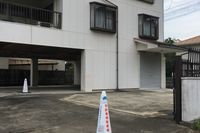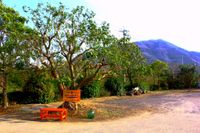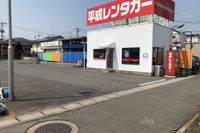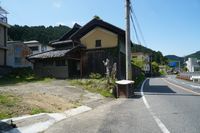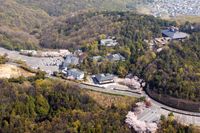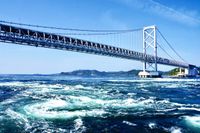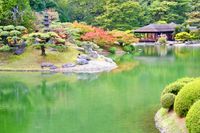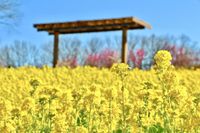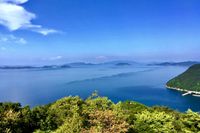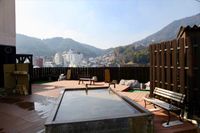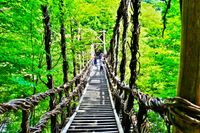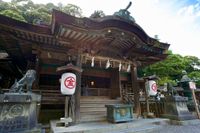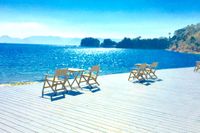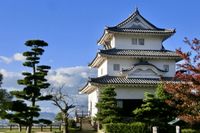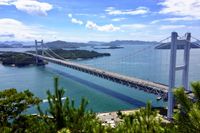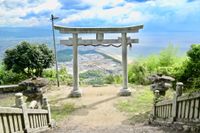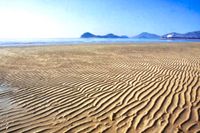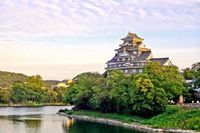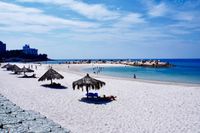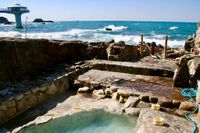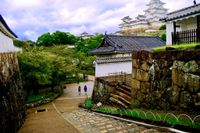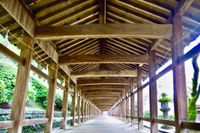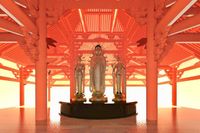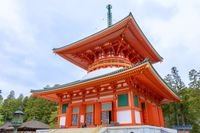Mount Bizan
徳島県/徳島市

Description
This is a mountain in the Tokushima prefecture. The name comes from the fact that it resembles the shape of an eyebrow in any perspective from which it is viewed. The surrounding area has a park, ropeway and driveway facilities. The contrasting views of the sunset along with the Yoshino River make this a particularly attractive spot for visitors.
Homepage
Address
Nearby Car Night Spots
ADLIV Factory Stay - Stay at the Printing Factory -
¥1,500〜
/ per nightTokushima Wakimachi Inojiri, Mima City
5.0
(1)Nearby Activities
There is no nearby activities
Ranking Stations
Vanlife BASE | 45 min. from Narita Airport / Perfect for campervan travel/A seaside town rich in nature/Japanese countryside town/welcome traveler
¥7,000〜
/ per nightChiba Koseki, Kujukuri-machi, Sambu-gun
5.0
(61)(Bonfire BBQ) Chita Mihama Noma Beach Station
¥3,500〜
/ per nightAichi Noma, Mihamacho, Chita County
4.7
(42)Shin Meishin Suzuka PA (inbound) RV Station Suzuka * With Power!
¥2,200〜
/ per nightMie Yamamotocho, Suzuka-shi
4.3
(156)Nearby Drive Spots
Naruto Whirlpools
A bridge that connects Naruto city and South Awaji city, it is a swirling lake area that spreads from the Naruto strait. The water swirls here can reach sizes of up to 30 meters, which is said to be one of the largest in the world.
Ritsurin Garden
This is a famous park in Takamatsu city. With Mount Shiun in the background, there are 6 ponds and 13 man made mountain areas, which boasts 400 years of history. There are various seasonal flowers that bloom from the trees in this areas, making it a park that constantly changes with the seasons, and its sheer variety of flora has meant that it has become known as a park with a "new view with every step taken".
Sanuki Mannou National Government Park
This is Shikoku's only nationally governed park, located in Kagawa prefecture. The park contains natural habitats for animals, a flower garden and an auto camping area. The area is particularly popular as a seasonal park as there are various varieties of flowers for all seasons, and for which there are seasonal festival events held regularly throughout the year.
Goshikidai Plateau
This is a mountain that protrudes out into the Setouchi coast, located in Kagawa prefecture. The name originates from a Chinese legend, and there are five mountains named with the colors of red, yellow, blue, black and white, hence the name "Go-iro" which means "5 colors". The Shiromine Temple and Negoro Temple, which were recognized by the Japanese poet and author Kukai as one of the "88 holy places of Shikoku" is also nearby. The mountain and coastal area also give way to stunning views.
Konpira Onsen
An Onsen built in 1997, situated in the western part of Kagawa prefecture, this is often a stop off spot for those visiting the shrine of Konpira Shrine. The local area is known for its special production of udon, with many restaurants serving unique types of udon noodle, as well as a Japanese sake museum built from a sake storage facility.※Credit:旅と温泉の無料写真素材 おんふぉと http://on-photo.com/
Iya Kazura Bridge
This is a bridge in the west part of Tokushima prefecture that traverses a valley. It is said that when Minamoto clan built this bridge, it was made by tying several tree roots together, so that it could be severed at any time to be able to escape. The 42 meter bridge has various gaps in the flooring, making it quite the adrenaline rush.
Konpira Shrine
This is the main shrine of the Konpira Shrine group, but its construction date is not known. It hosts the Gods known as Oomononushi no Mikoto and Emperor Sutoku, and is particularly revered by fishermen and mariners, due to the temple Gods acting as protectors for those at sea. The shrine has enjoyed popularity due to its unique souvenir of a gold emblem being imprinted onto a circular trinket. The path up to the temple is long, with 1368 stone steps.
Naoshima Islands
This is an island in Kagawa prefecture, that is situated in the Setouchi coast. This island is in fact famous for art exhibits, and hosts many art museums and exhibits, such as the "pumpkin" exhibition of Kazuyo Kusama, and attracts many art enthusiasts from around the world.
Marugame Castle
This is a castle which was built in 1602 by Ikoma Chikamasa. It is one of Japan's 12 remaining castle towers, and is famous for being built on Japan's tallest castle stone hill of 66 meters, giving it the name of the "stone castle". Visitors can also see a wooden model of the castle which was originally created as a proposal submitted to the Edo Bakufu Shogunate.
Mount Washu
A 133m high mountain situated in Kurashiki City. Facing the Seto Inland Sea, it has an observation platform with views of the entire Great Seto bridge as well as numerous islands. It was named due to its resemblance to an eagle spreading its wings There is an ancient tomb between the middle of mountain and the summit which is a particular highlight.
Takaya Shrine
This shrine hosts the Gods known as Ninigi no Mikoto, Ukemochi no KamiKonohano-sakuyahime no Mikoto, with the main shrine hall at the top of the 407 meter Mount Inazumi. Its construction date is known. From the top area (which is 270 steps up) visitors can see views of the whole of Kannonji Temple along with the Setouchi coast, which has given the shrine the alternate moniker of "The heavenly Torii gate". Night views are equally as stunning, drawing numerous photographers to the area regardless of the time of day.
Chichibugahama Beach
This is a sandy beach facing the Setouchi coast in the western part of Kagawa prefecture. With its stunningly clear salt waters, it is known as the "heavenly mirror" as it is an ideal photo spot to take a picture of a landscape, with it faithfully reflected by the sea. This has made the area particularly popular for photographers, as well as holidaygoers who visit the area in the summer for beach and water activities.
Korakuen Garden
This is one of Japan's three great parks, created in 1700 under the instruction of Ikeda Tsunamasa, as a representation of the "Genroku" culture of the Edo period(1603-1868). The garden has the "Enyotei" area as the center of the garden, where views of Okayama Castle and the surrounding area can be enjoyed. The park boasts an area of 133,000 square meters, with many amazing sites such as a Noh theatre stage, Mount Yuishin, a plum grove as well as Chishio forest.
Shirara Beach
This is a sandy beach located in Namariyama bay in Wakayama prefecture. It is known as a white sandy beach whose sand is formed from quartz. It is a sister beach twinned with Waikiki beach in Hawaii, and being at this beach certainly gives a feeling of being in a tropical paradise. Many visitors come in summer to enjoy beach and water activities here.
Shirahama Onsen
This is an old hot spring on the coast of Wakayama Prefecture. It boasts 1400 years of history, and various emperors such as Emperor KogyokuEmperor Jito and Emperor Monmu visited the place and is registered in the chronicles of Japan. It was loved by nobles and aristocrats as well as the regular people of the time, as it is today. It has plenty of facilities such as lodging, cooking areas, and camping areas. There are amazing views of the pacific ocean from the baths.
Himeji Castle
This is Japan's only world heritage castle built in 1346 under the instruction of Akamatsu Sadanori. It is one of Japan's 12 castle towers and one of 5 registered as a national treasure in Japan. It is also known as one Japan's three greatest castles. It was expanded by its respective castle owners such as Toyotomi Hideyoshi and Ikeda Terumasa during the Sengoku era(1467-1600), to become the impressive castle that it is today. Due to its impressive white appearance, it is also known as the "White Egret castle".
Kibitsu Shrine
A shrine whose construction date is unknown. The main shrine God is known as Ookibitsu no Mikoto, and was revered as the great shrine of the Kibikuni area (which included Okayama, Hiroshima and parts of other areas). Ashikaga Yoshimitsy, who instructed the construction of the shrine, is said to have used the "Hiyoku Irimoya Zukuri" style, which a traditional Japanese Shinto architectural style characterized by four dormer gables, two per lateral side, on the roof of a very large main shrine. The place was designated as a national treasure and is famous for its 398 meter long passageway It is also famous for being the setting of the legend of "Ura Taiji" featured in Japanese folt tale "Momotaro(The peach boy)".
Jodoji Temple
This is a Shingon sect temple built in 1198 under the instruction of Chogen. The objects of worship are known as Yakushi Nyorai and Amida Nyorai and three great Buddha statues known as Amida Sansonzo, created by Kaikei are desiganated national treasures, along with Jodo do. At Mountain next to Jodoji Temple, there are around 10,000 hydrangea flowers along the path, providing a vividly colorful view.
Kongobuji Temple
This is a mount Koya Shingon sect central temple built in 816 AD under the instruction of the great teacher and poet, Kukai. The main object of worship is known as Yakushi Nyorai, and it is registered as a World Heritage Site. This area is a sacred buddhist site located at the top of the mountain, with an altitude of 1000 meters, and around 100 temples are concentrated in this area. In the temples further into the area contain memorial towers to great figures such as Oda Nobunaga, Shinran, Date Masamune and others. One can also find the tombstone of Takeda Shingen here, as well as as as the mausoleum of Uesugi Kenshin, which is a building which also has the same function as a shrine.

